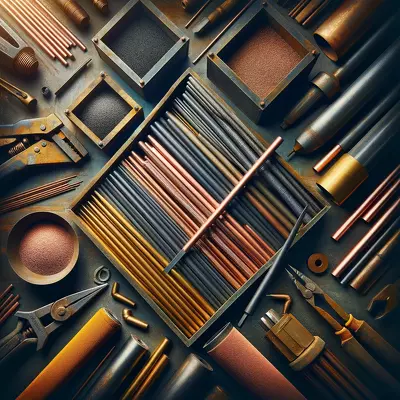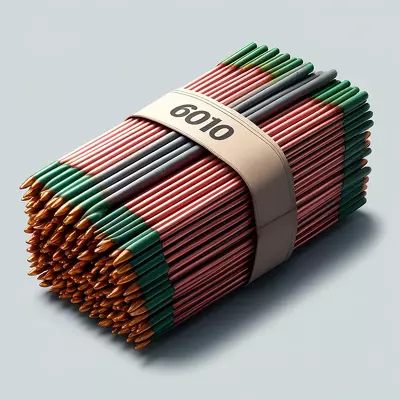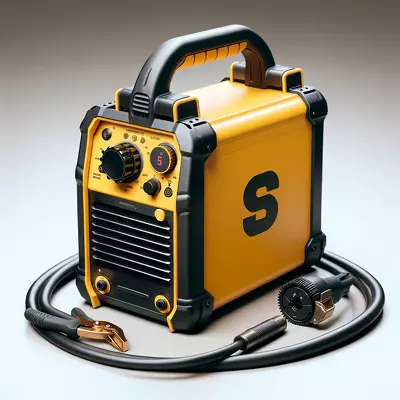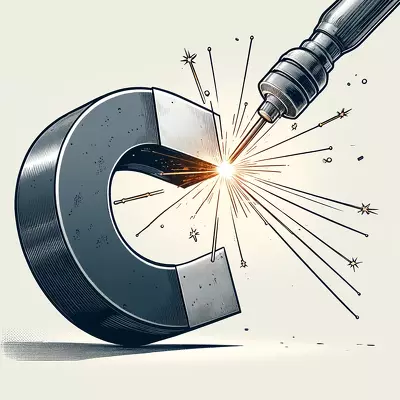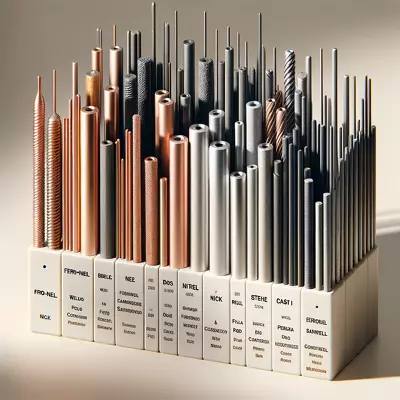Mastering the Art of Metal Fusion: A Deep Dive into the World of Different Types of Welding Rods
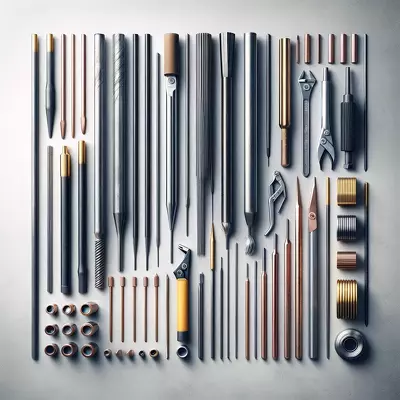
Welding rods are essential components in the fabrication and repair of metal structures. Each type is designed to meet specific requirements of strength, durability, and compatibility with different metals. These tools play a pivotal role in various industrial applications, from construction to automotive repair, offering distinct properties that cater to diverse welding techniques and environments. Understanding their variations is crucial for professionals aiming to achieve optimal results in their welding projects.
I. Introduction
Welding rods, the consumable components used in the welding process, serve as a crucial element in joining metals together. These rods, varying in material and composition, facilitate the creation of strong, durable bonds between different metal pieces. This article explores the intricacies of welding rods, detailing their types, selection criteria, applications, and the considerations necessary for their effective use.
II. Understanding Welding Rods
A. Definition and Purpose
Welding rods are filler metals used in welding processes to fuse two pieces of metal. Acting as a conduit for the welding current, they melt to form a weld pool, which, upon cooling, creates a strong joint between the base materials.
B. The Role of Welding Rods in Welding Processes
These rods play a pivotal role in determining the strength, durability, and corrosion resistance of the weld. They also influence the welding process’s efficiency, affecting penetration depth, weld bead shape, and slag removal ease.
C. Types of Welding Techniques and Corresponding Rods
Different welding techniques, such as shielded metal arc welding (SMAW), gas tungsten arc welding (GTAW), and gas metal arc welding (GMAW), require specific types of welding rods. Each rod type is designed to complement the welding method, ensuring optimal performance and results.
III. Types of Welding Rods
A. Cellulose Electrodes
Cellulose electrodes are characterized by their high moisture content, which helps create a deep penetrating arc. They are primarily used for welding in vertical or overhead positions.
B. Low Hydrogen Electrodes
These electrodes minimize hydrogen content in the weld area, reducing the risk of hydrogen-induced cracking. They are suitable for welding high-strength steel and other sensitive materials.
C. Iron Powder Electrodes
Iron powder electrodes contain iron powder in their coating, increasing the deposition rate. They are ideal for filling large gaps and building up worn-out surfaces.
D. Stainless Steel Electrodes
Stainless steel electrodes are used for welding stainless steel materials, offering corrosion resistance and strength. They are available in various compositions to match the stainless steel grades being welded.
E. Aluminum Electrodes
Aluminum electrodes are designed for welding aluminum and its alloys. They require specific techniques and conditions due to aluminum’s high thermal conductivity and oxide layer.
F. Specialty Electrodes for Unique Applications
Specialty electrodes cater to specific requirements, such as welding nickel alloys, cast iron, or hard-facing applications, providing solutions for challenging welding tasks.
IV. Selection Criteria for Welding Rods
A. Material Compatibility
The welding rod material must be compatible with the base metals to ensure a strong and cohesive weld.
B. Welding Position
Certain rod types are better suited for specific positions, such as horizontal, vertical, or overhead welding.
C. Current Type and Polarity
The choice of the rod depends on the welding current (AC or DC) and polarity used, affecting arc stability and penetration.
D. Strength Requirements
The mechanical properties of the welding rod must meet or exceed the strength requirements of the welded joint.
E. Environmental Considerations
In outdoor or harsh environments, rods with certain coatings or properties may be necessary to withstand conditions such as moisture or temperature extremes.
V. Common Applications of Different Welding Rods
A. Construction Industry
In construction, welding rods are used to join structural steel components, ensuring the integrity and safety of buildings and infrastructure.
B. Automotive Repair
Welding rods facilitate the repair and fabrication of automotive parts, from body panels to frames, requiring precision and durability.
C. Manufacturing Sector
The manufacturing of machinery and equipment often involves welding rods designed for specific materials and strength needs.
D. Art and Sculpture
Artists and sculptors use welding rods to create metal artworks, selecting rods for their compatibility with various metals and finishes.
VI. Advantages and Limitations of Various Welding Rods
A. Performance in Different Environments
Some welding rods are formulated to perform well in adverse conditions, such as underwater or in high humidity, offering versatility.
B. Durability and Longevity
The right welding rod can significantly enhance the durability and lifespan of the welded joint, resisting wear and corrosion.
C. Cost-Effectiveness
While some welding rods offer premium performance characteristics, they may come at a higher cost, affecting project budgets.
VII. Maintenance and Safety Considerations
A. Proper Storage of Welding Rods
Storing welding rods correctly is essential to prevent moisture absorption and degradation, ensuring their performance and longevity.
B. Handling and Safety Precautions
Safe handling practices are crucial to avoid exposure to harmful fumes and to ensure the safe use of welding rods.
C. Disposal of Used Welding Rods
Proper disposal methods are necessary to minimize environmental impact and comply with regulations regarding hazardous materials.
VIII. FAQs
Q: What determines the choice of welding rod for a project?
A: The choice is influenced by material compatibility, welding position, current type and polarity, strength requirements, and environmental conditions.
Q: Can the same welding rod be used for different metals?
A: No, welding rods are material-specific to ensure proper fusion and integrity of the weld.
Q: How does the diameter of the welding rod affect the welding process?
A: Rod diameter influences arc stability, penetration depth, and weld bead size, impacting the overall quality of the weld.
Q: Are all welding rods suitable for outdoor use?
A: Not all rods are suitable for outdoor use; some are specifically formulated to resist adverse weather conditions.
Q: How do I store welding rods properly?
A: Store them in a dry, controlled environment, away from moisture and extreme temperatures, to preserve their quality.
Q: What safety equipment is necessary when using welding rods?
A: Proper safety equipment includes gloves, a welding helmet with appropriate filter shade, and protective clothing.
Q: How are welding rods disposed of?
A: Follow local regulations for the disposal of hazardous materials, considering the chemical composition of the welding rod’s coating and core.
Q. What does the number on a welding rod mean?
A. The number on a welding rod is a code that provides important information about the rod’s characteristics and appropriate usage.
IX. Conclusion
A. Summary of Key Points
Welding rods are indispensable in the welding process, with various types designed to meet the specific requirements of different welding tasks. Their selection is critical to achieving a strong, durable, and corrosion-resistant weld.
B. The Importance of Choosing the Right Welding Rod
Selecting the appropriate welding rod is essential for the success of any welding project, impacting the weld’s quality, strength, and longevity.
C. Future Trends in Welding Rod Technology
Advancements in welding rod technology continue to focus on improving performance, environmental sustainability, and user safety, promising enhanced efficiency and outcomes for the welding industry.
X. Suggested Readings
To further your understanding of welding rods and their applications, consider exploring the following books:
- “Welding Principles and Applications” by Larry Jeffus: This book provides a comprehensive overview of welding technology, including detailed discussions on welding rods and their applications.
- “Modern Welding Technology” by Howard B. Cary: Cary’s book offers insights into advanced welding technologies and materials, including an in-depth look at welding electrodes and their selection.
- “Metallurgy and Weldability of Stainless Steels” by John C. Lippold and Damian J. Kotecki: This specialized text delves into the welding of stainless steels, covering electrode selection and welding practices.
- “The Procedure Handbook of Arc Welding” by The Lincoln Electric Company: A classic in the field, this handbook offers practical guidance on arc welding techniques and materials, including electrode use.
- “Welding Metallurgy” by Sindo Kou: Kou’s book focuses on the science behind welding processes, including the role of welding rods in achieving desired metallurgical properties.
These resources offer valuable insights into the science and practice of welding, catering to both novices and experienced professionals seeking to enhance their skills and knowledge in the field. As the welding industry continues to evolve, staying informed through reputable sources is key to mastering the art and science of welding.

